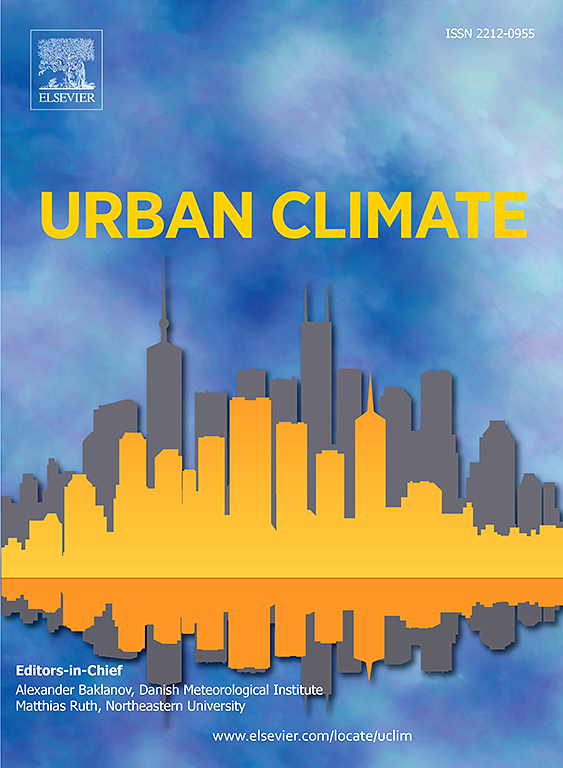Impact of residential morphology on outdoor thermal comfort and building energy consumption in winter and summer: A case study
IF 6
2区 工程技术
Q1 ENVIRONMENTAL SCIENCES
引用次数: 0
Abstract
Urban morphology simultaneously influences outdoor thermal comfort (OTC) and building energy consumption (BEC). However, the quantitative impact of urban morphology parameters on OTC and BEC, especially taking into account demand differences across seasons, has not been systematically revealed. This study investigated the OTC and BEC of 25 representative residential cases on typical winter and summer days by coupled simulations, and quantitatively analyzed the impact of residential morphology on both. Results show that: 1) Average outdoor air temperature varies by up to 1.84 °C in summer and 0.80 °C in winter among different types of residential areas; 2) Heating energy consumption varies by up to 11.02 % and cooling energy consumption by up to 5.04 % among different types of residential areas; 3) The sky view factor (SVF) and greenery are key parameters affecting OTC in winter and summer. The shape factor (SF) and building density (BD) are closely related to heating energy consumption; SF and greenery are closely related to cooling energy consumption. Cooling energy consumption is more closely related to the outdoor microclimate than heating; 4) Floor area ratio (FAR), SF, and aspect ratio of the building plane have consistent impacts on energy consumption and are key parameters in residential design.
住宅形态对冬夏两季室外热舒适及建筑能耗影响的案例研究
城市形态同时影响室外热舒适(OTC)和建筑能耗(BEC)。然而,城市形态参数对OTC和BEC的定量影响,特别是考虑到不同季节的需求差异,尚未得到系统的揭示。本研究通过耦合模拟的方法,对25个典型住宅案例在冬季和夏季的OTC和BEC进行了调查,并定量分析了住宅形态对两者的影响。结果表明:1)不同类型住区室外平均气温夏季差异高达1.84℃,冬季差异高达0.80℃;2)不同类型住宅小区供暖能耗差异高达11.02%,制冷能耗差异高达5.04%;3)天空景观因子(SVF)和绿化是冬、夏两季影响OTC的关键参数。建筑形状因子(SF)和建筑密度(BD)与采暖能耗密切相关;SF和绿化与制冷能耗密切相关。与采暖相比,制冷能耗与室外小气候的关系更为密切;4)容积率(FAR)、SF和建筑平面长宽比对能耗的影响是一致的,是住宅设计中的关键参数。
本文章由计算机程序翻译,如有差异,请以英文原文为准。
求助全文
约1分钟内获得全文
求助全文
来源期刊

Urban Climate
Social Sciences-Urban Studies
CiteScore
9.70
自引率
9.40%
发文量
286
期刊介绍:
Urban Climate serves the scientific and decision making communities with the publication of research on theory, science and applications relevant to understanding urban climatic conditions and change in relation to their geography and to demographic, socioeconomic, institutional, technological and environmental dynamics and global change. Targeted towards both disciplinary and interdisciplinary audiences, this journal publishes original research papers, comprehensive review articles, book reviews, and short communications on topics including, but not limited to, the following:
Urban meteorology and climate[...]
Urban environmental pollution[...]
Adaptation to global change[...]
Urban economic and social issues[...]
Research Approaches[...]
 求助内容:
求助内容: 应助结果提醒方式:
应助结果提醒方式:


